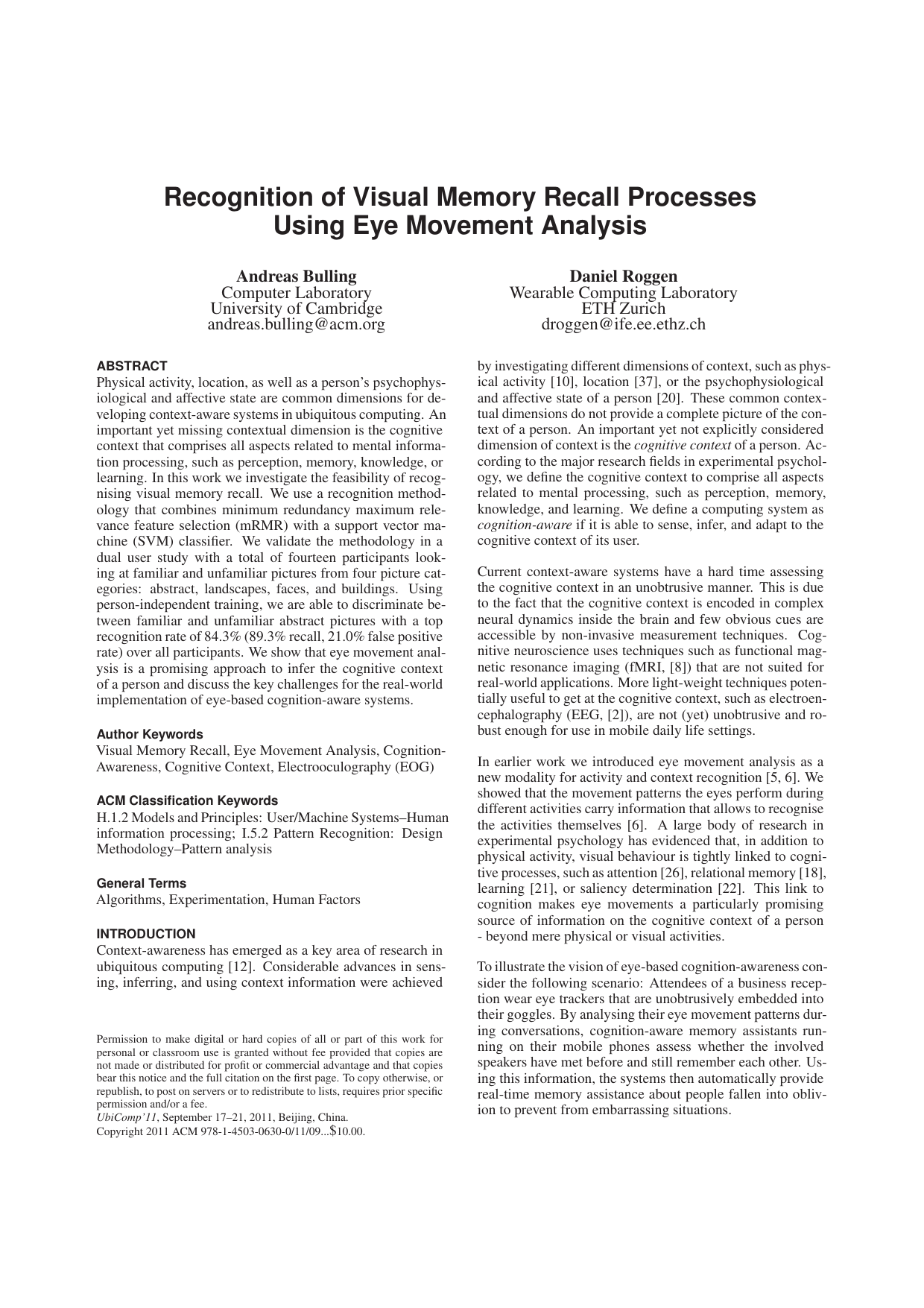Recognition of Visual Memory Recall Processes Using Eye Movement Analysis
Abstract
This dataset was recorded to investigate the feasibility of recognising visual memory recall from eye movements. Eye movement data was recorded of participants looking at familiar and unfamiliar pictures from four picture categories: abstract, landscapes, faces, and buildings. The study was designed with two objectives in mind: (1) to elicit distinct eye movements by using a large screen and well-defined visual stimuli, and (2) to record natural visual behaviour without any active visual search or memory task by not asking participants for real-time feedback.
Download (25.3 Mb)
The data is only to be used for non-commercial scientific purposes. If you use this dataset in a scientific publication, please cite the following paper:
-

Recognition of Visual Memory Recall Processes Using Eye Movement Analysis
Proc. ACM International Joint Conference on Pervasive and Ubiquitous Computing (UbiComp), pp. 455-464, 2011.
The dataset has the following characteristics:
* ~7 hours of eye movement data recorded using a wearable Electrooculography (EOG) system* 7 participants (3 female, 4 male), aged between 25 and 29 years
* one experimental run for each participant, involving them to look at four continuous, random sequences of pictures (exposure time for each picture 10s). Within each sequence, 12 pictures were presented only once; five others were presented four times at regular intervals. In between each exposure, a picture with Gaussian noise was shown for five seconds as a baseline measurement. separate horizontal and vertical EOG channels, joint sampling frequency of 128Hz
* fully ground truth annotated for picture type (repeated, non-repeated) and picture category

